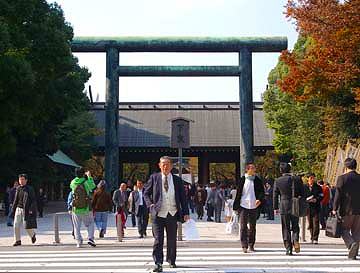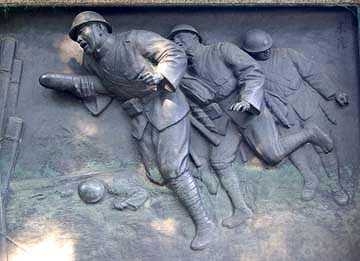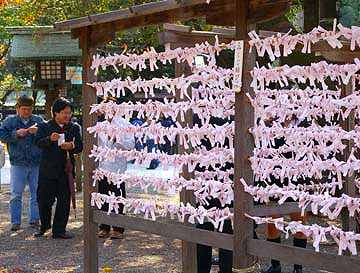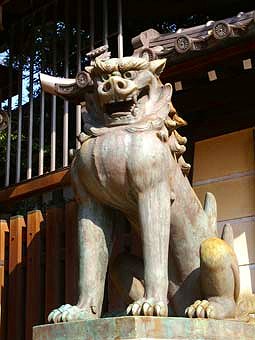![]()
 |
Yasukuni shrine is regarded by most Asians as a symbol of Japanese militarism.
The reason they claim is that the shrine honors class A war criminals and
justifies the Pacific war as a fight for liberation of Asian nations from
western colonialism. When Japanfs prime minister Junichiro Koizumi visited
the shrine on Oct 17. 2005, Beijing and Seoul condemned the visit as a
serious provocation to Asian people. |
![]()
 |
 |
The shrine is located in cntral Tokyo near Kitanomaru park. It takes several minuits from Kudansita tube station walking up a slope to get to the first Torii, Shinto shrine gate. A placard announced an exhibition memmorating the Russo Japanese war was under show. |
|
 |
 |
A bronze statue of a man stands up high on a stone column. The man is Masujiro Ohmura. He was a samurai of Choshu clan and a leader of the pro-imperial forces. He became a founder of Japan's modern military forces. |
|
 |
 |
 |
 |
Main building and main torii. |
|
 |
 |
These reliefs show up the bravery of Japanese warriors. |
|
 |
 |
There is a war museum called Yushukan next to the main shrine building. War ship and cannons are displayed in front of the museum. |
|
 |
 |
War veterans and their relatives come to the shrine to appeal their contribution to the country. Some of them plant trees on the shrine's ground to memmorate their contribution. |
|
 |
 |
A Noh theare stands in a corner of the shrine. Noh is a Japanese traditional performance art loved by samurai. |
|
 |
 |
There is a Japanese garden in back yard of the shrine. People who visit the shrine can take a break time here. |
|
 |
 |
A pair of stone lions stand in front of the gate of the shrine to watch out for the shrine to be kept safe. The lion who opens his mouth wide is called Ah statue. The lion who shuts up his mouth is called Ung statue. Back to Home Back to Index of Temples and Shrines Go to the Sitemap Go to the Japanese Edition |
|